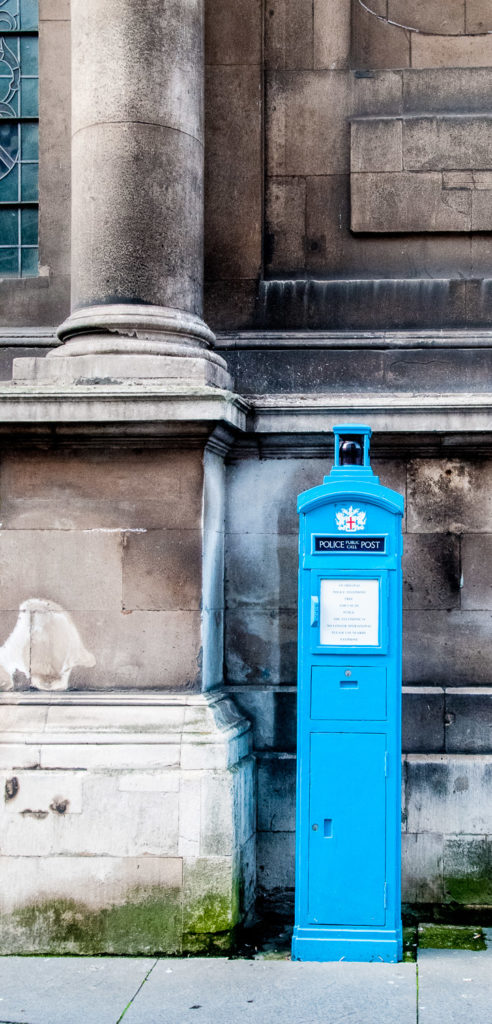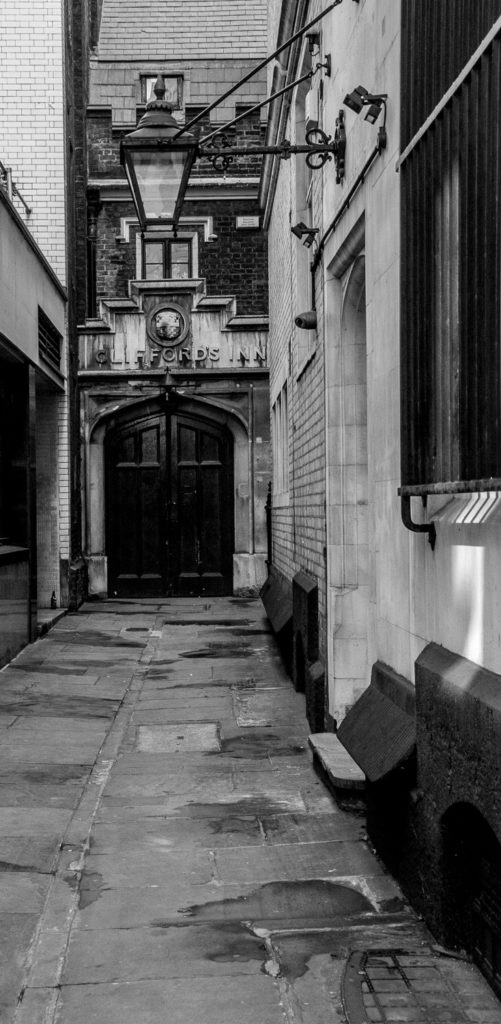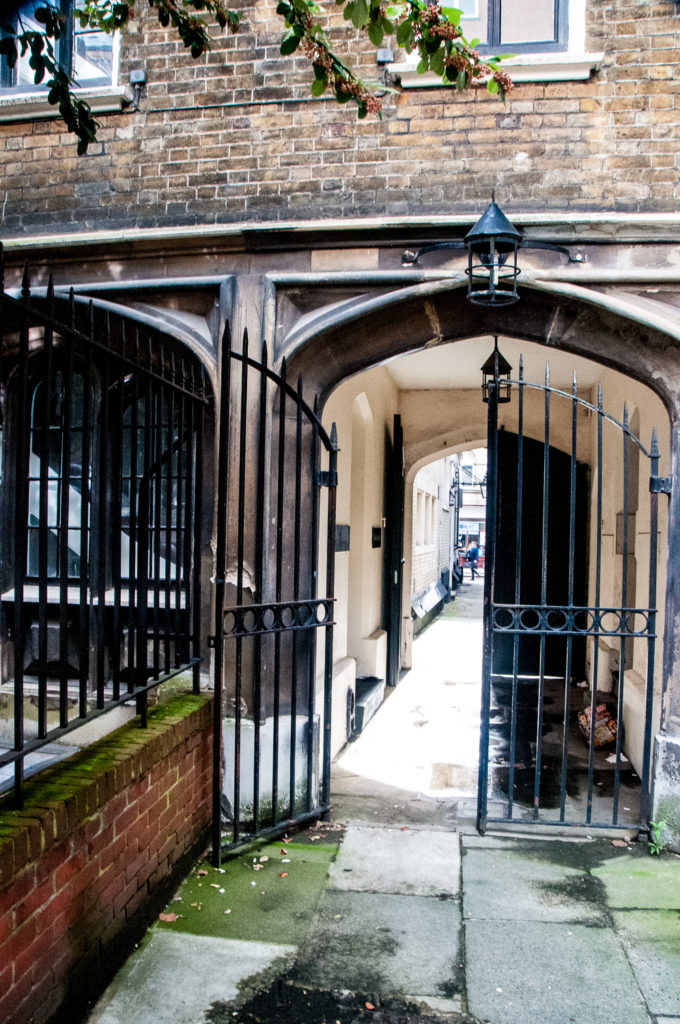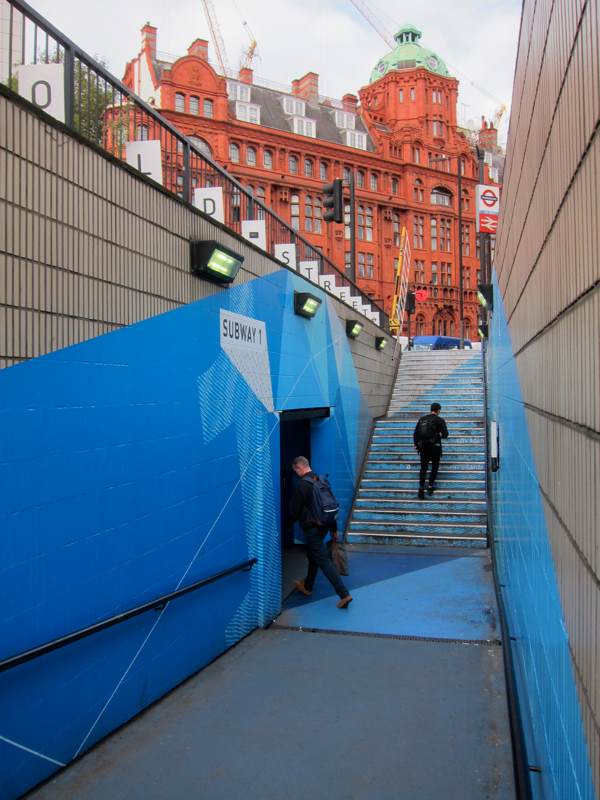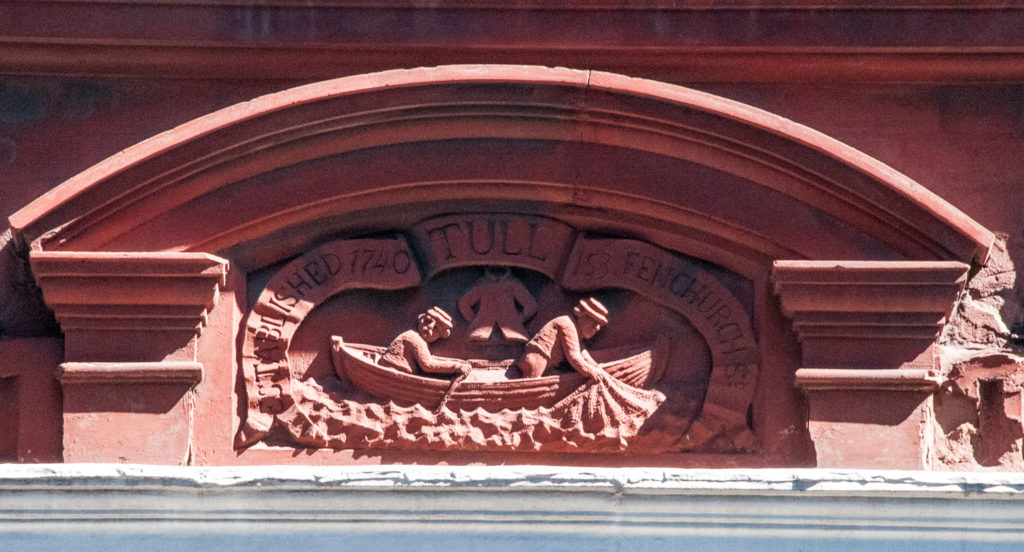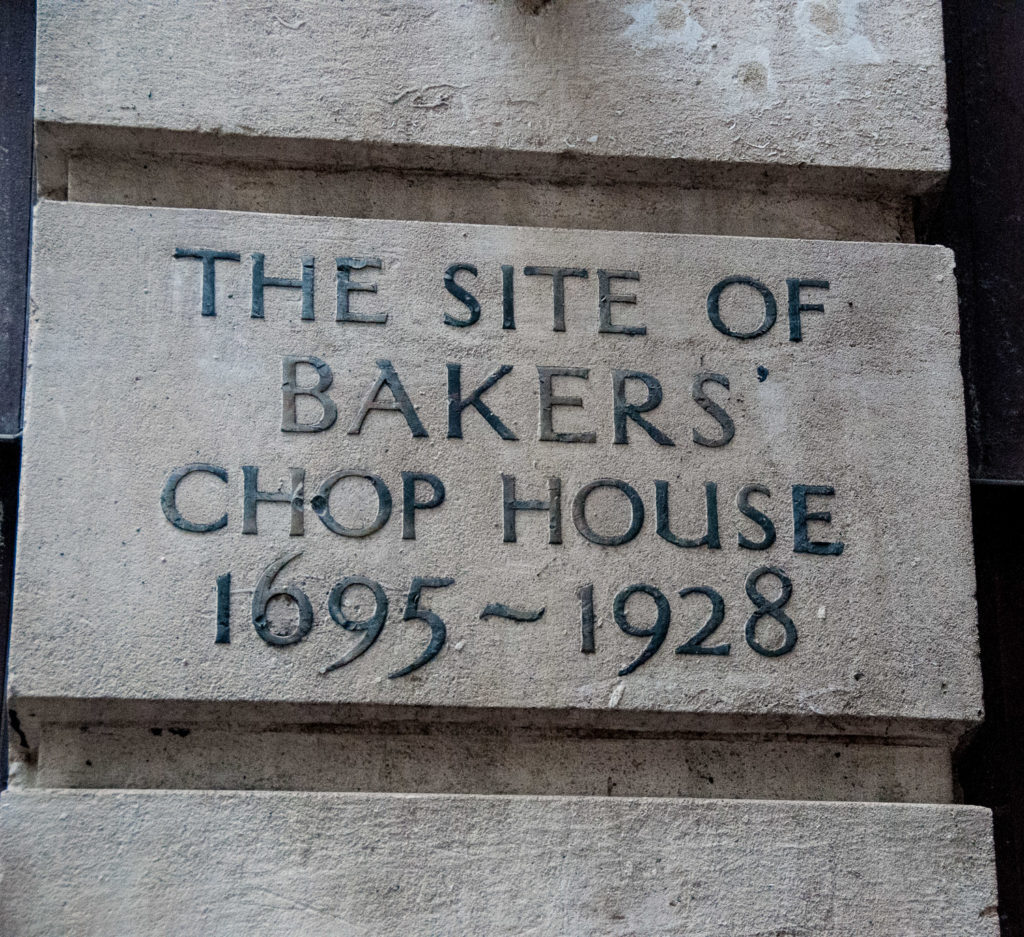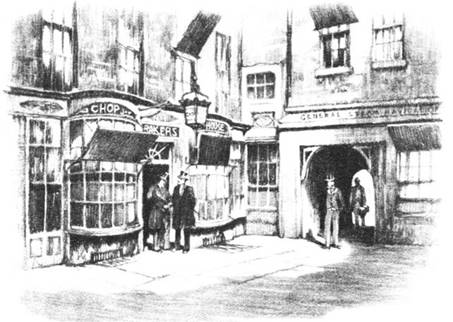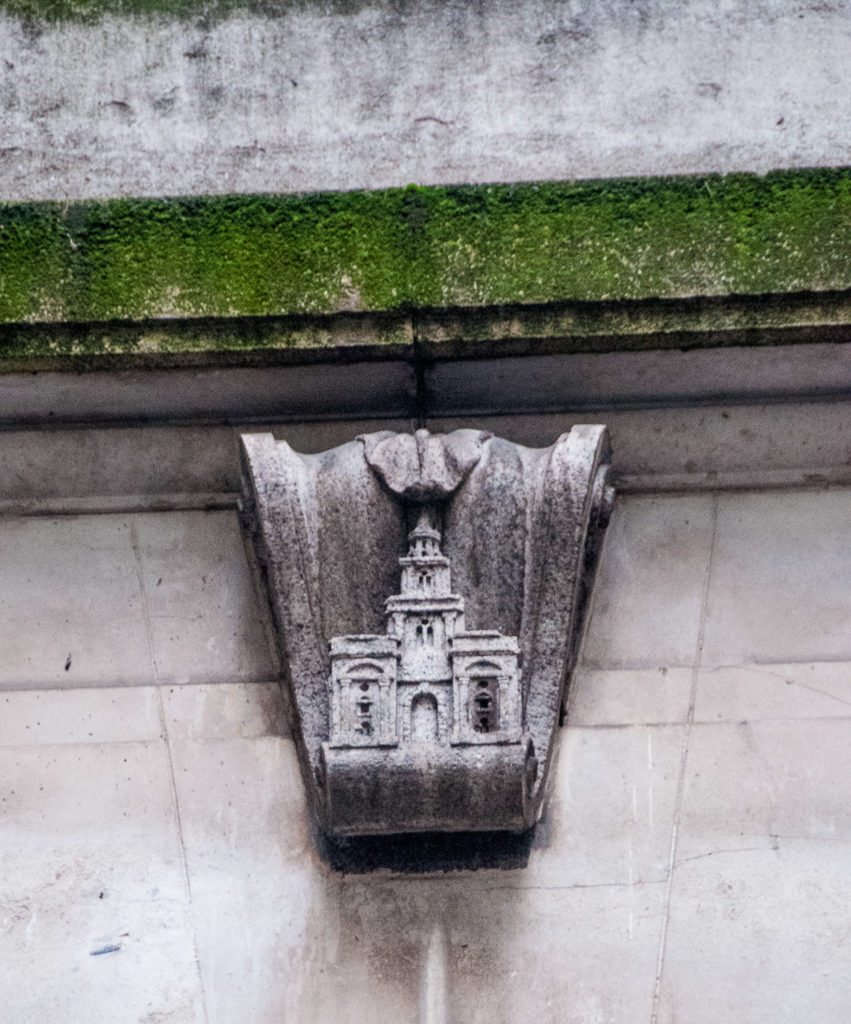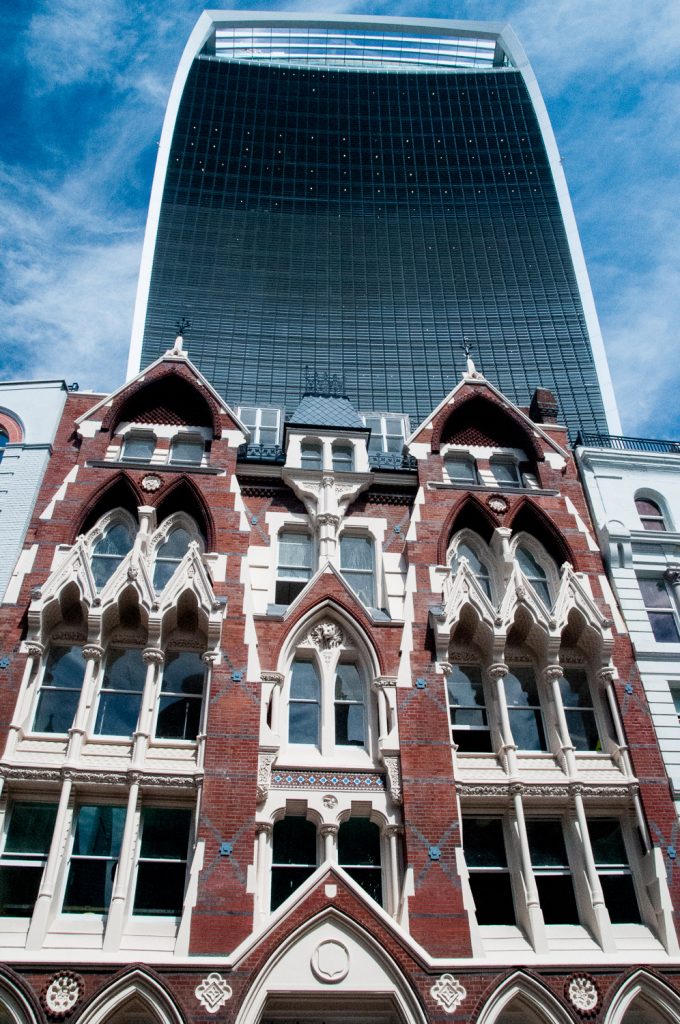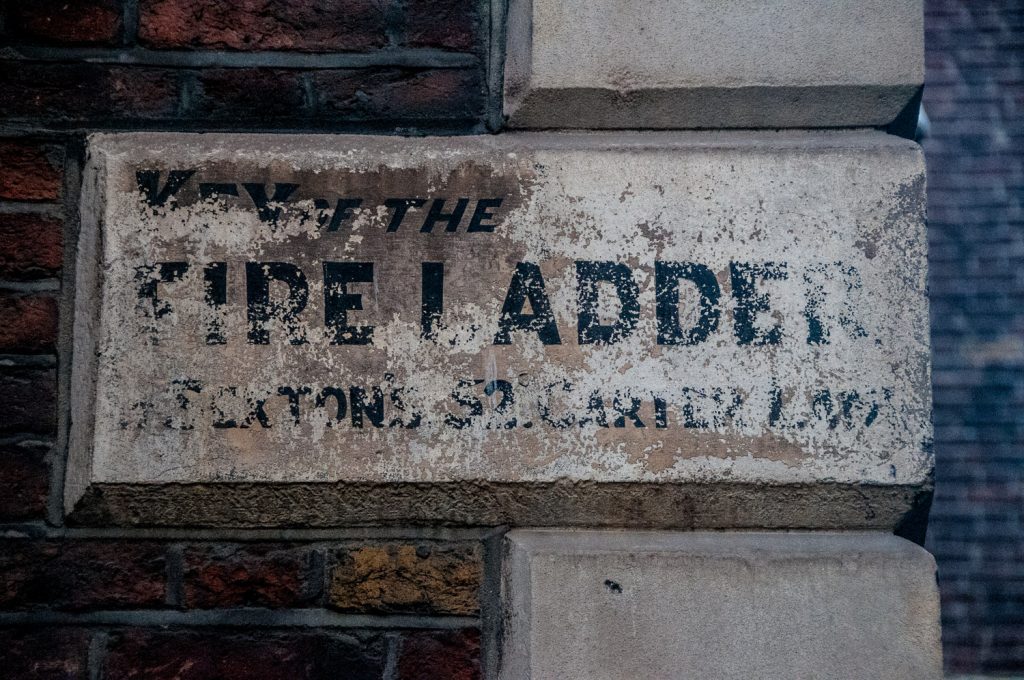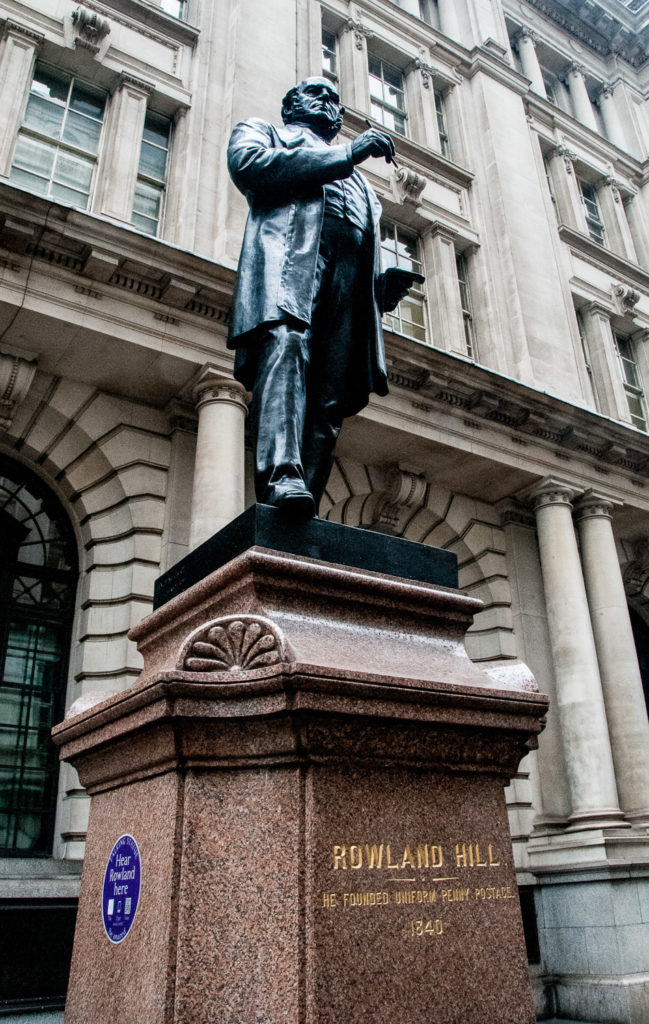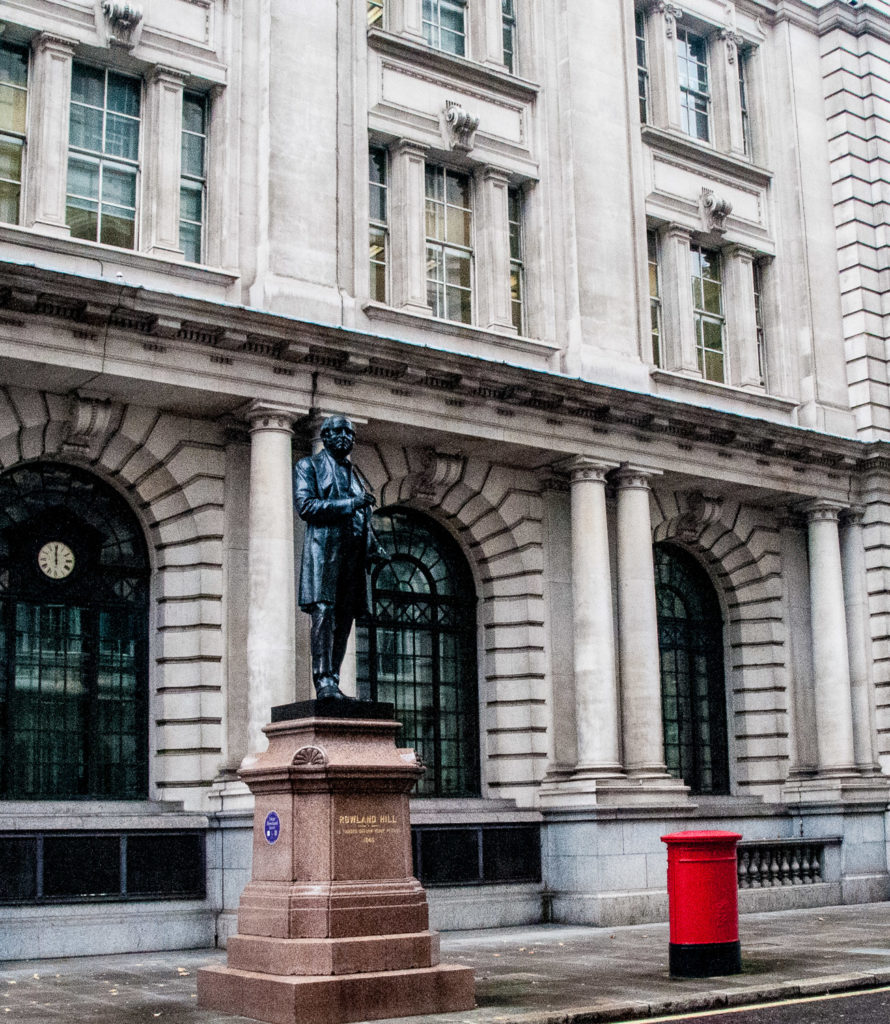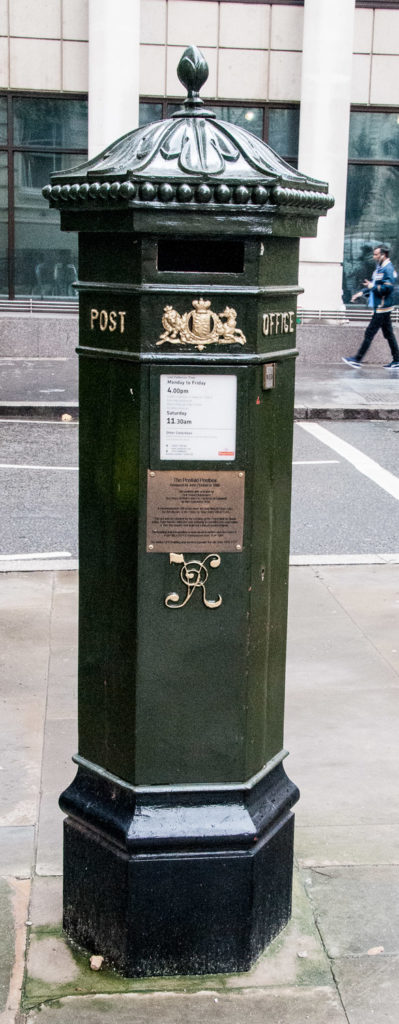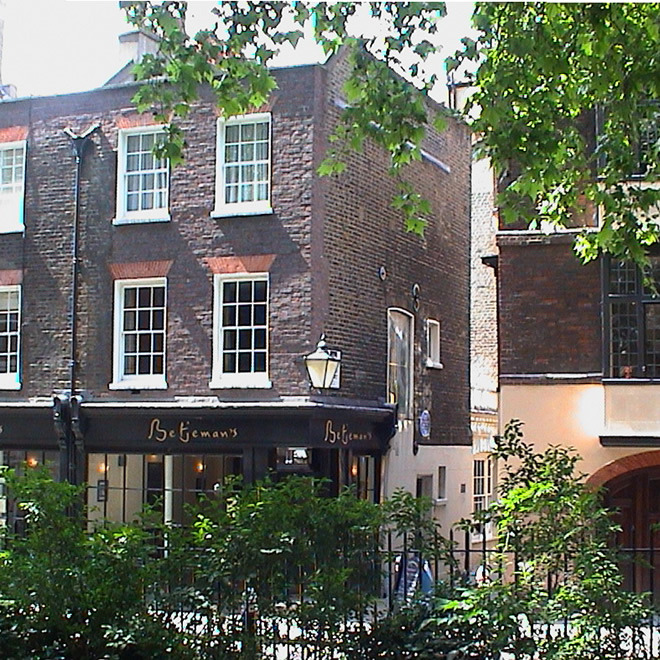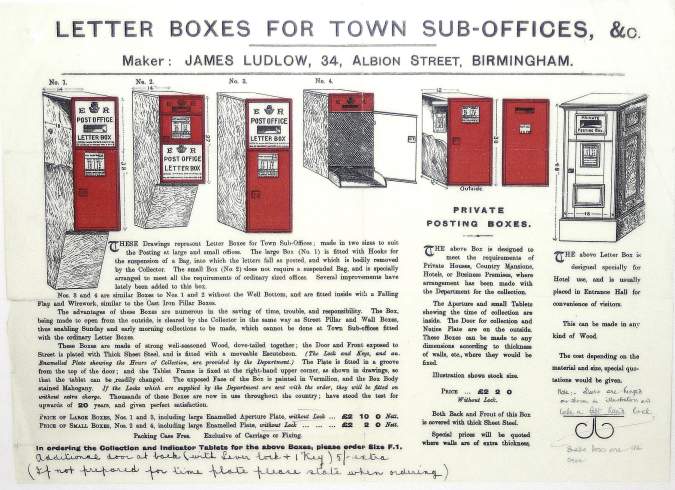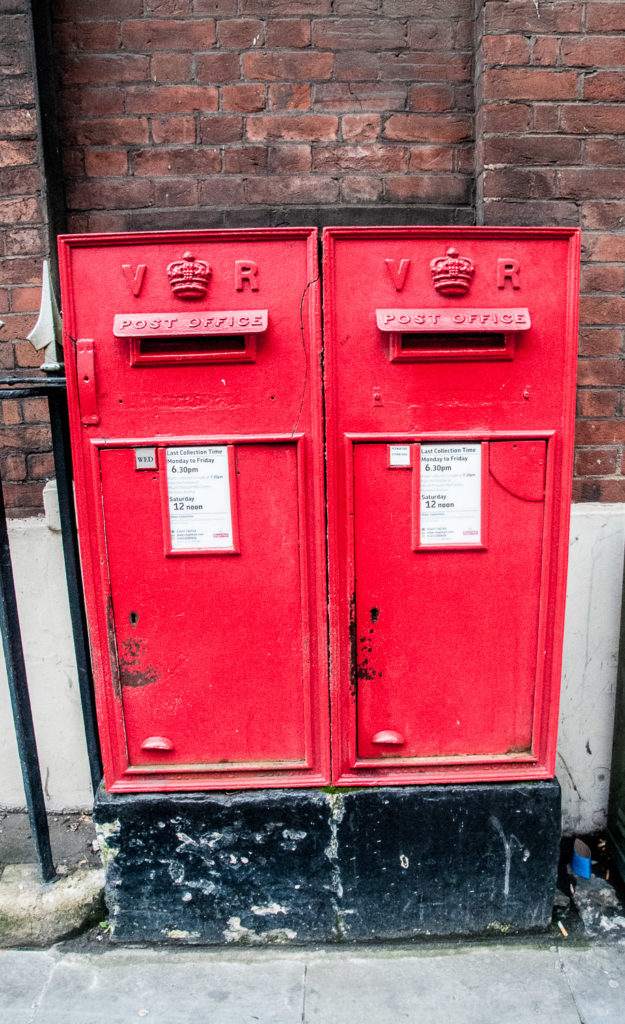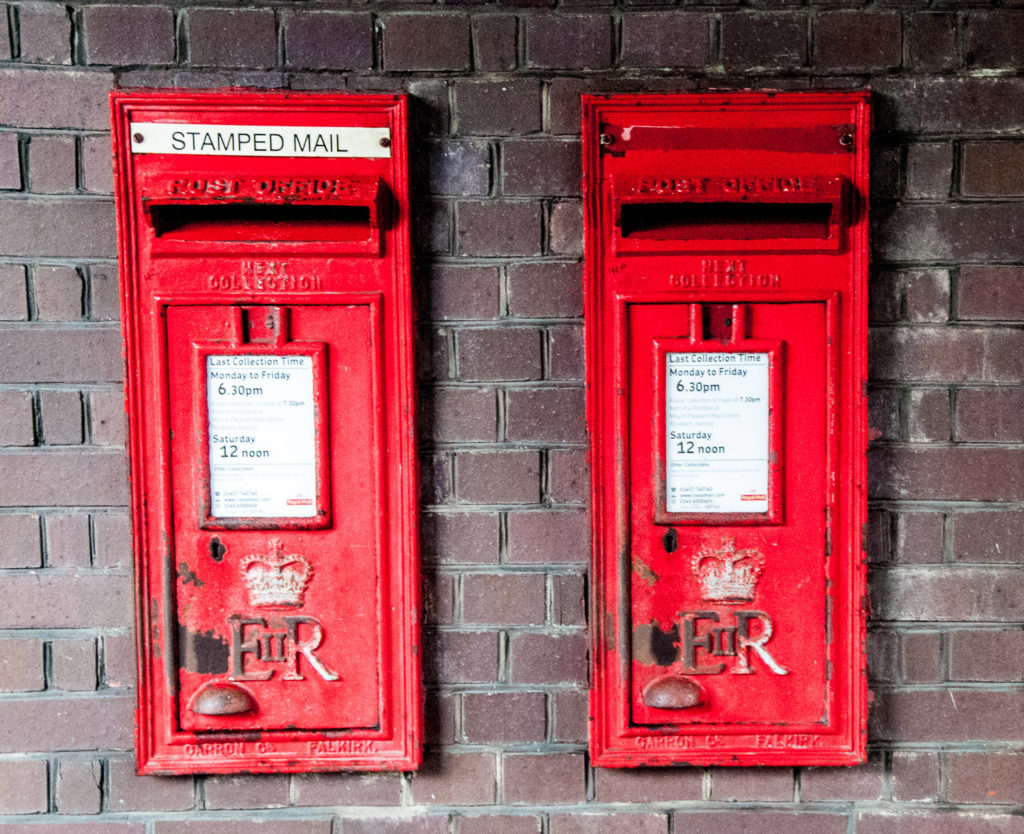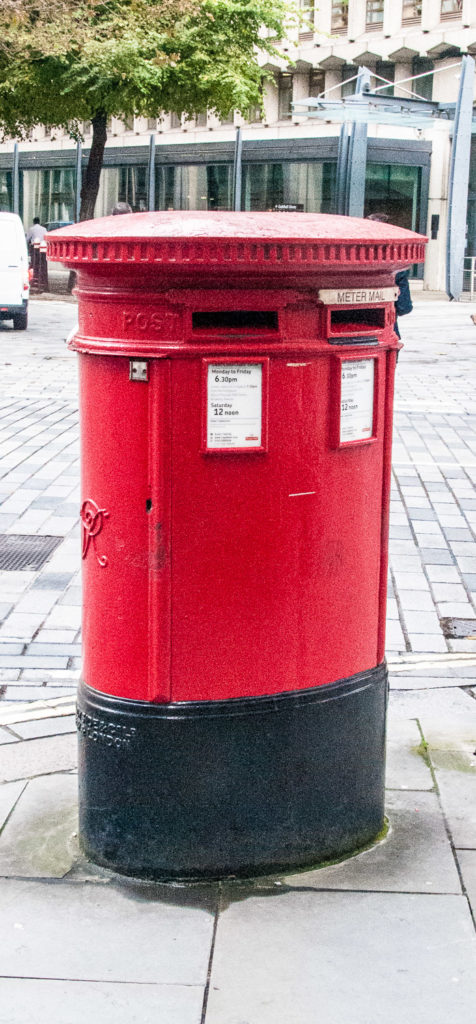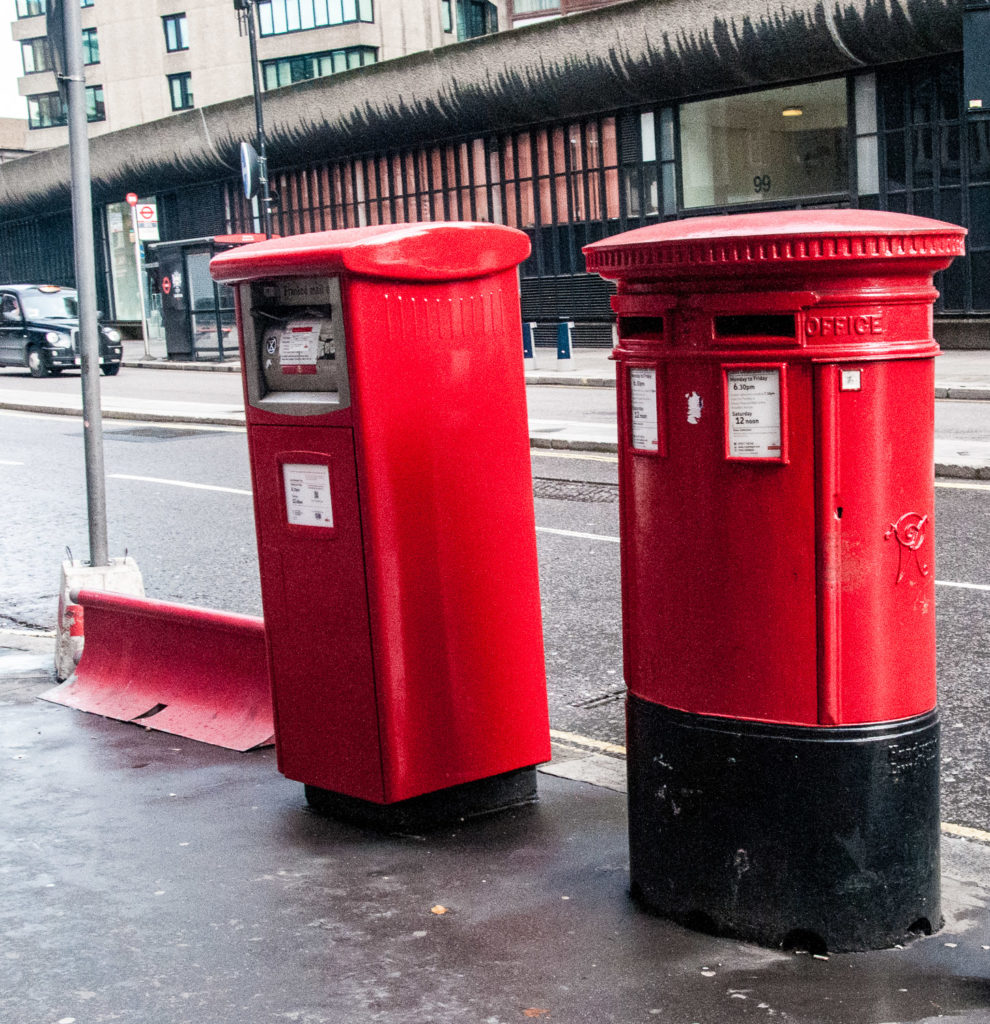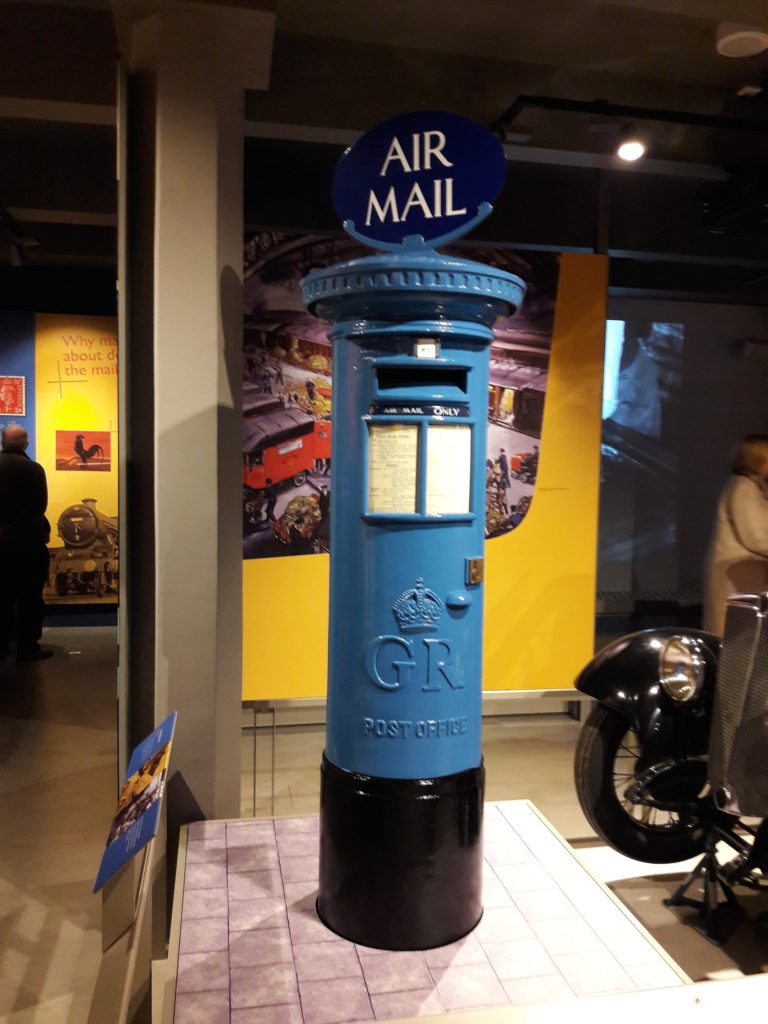Although I have written about Fleet Street in an earlier blog, I always find something new to write about when I walk there.
How about these impressive gates incorporating the words ‘Serjeant’s Inn’ …
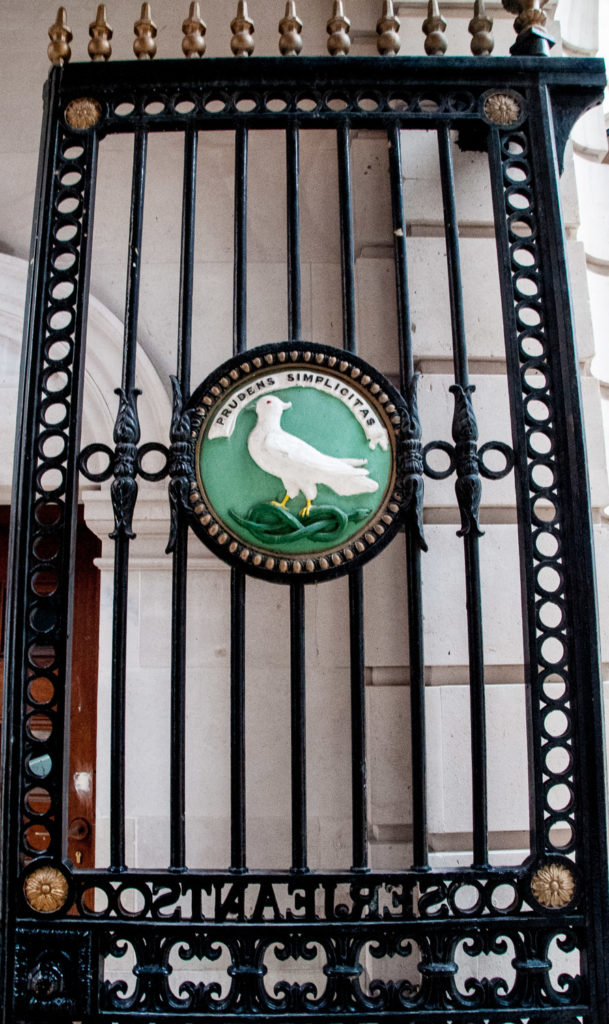
What caught my eye, however, was the dove perched on a twisted serpent and the words Prudens Simplicitas (Prudent Simplicity). This was the motto of the Amicable Society which was based here from 1838 and was the world’s first mutual life insurance company. The unusual choice of creatures may refer to a biblical quotation in which Jesus exhorted followers to be ‘wise as serpents, gentle as doves’. Lost during building works, the gates were rediscovered in a scrapyard in 1937 and returned to their original position here in 1970.
The arms were officially granted on 9 February 1808 to the Amicable Society for a Perpetual Assurance Office and re-granted 14 April 1938 to the Norwich Union Life Insurance Society after the two organisations merged. You can see the dove and serpent in the Norwich Union coat of arms …
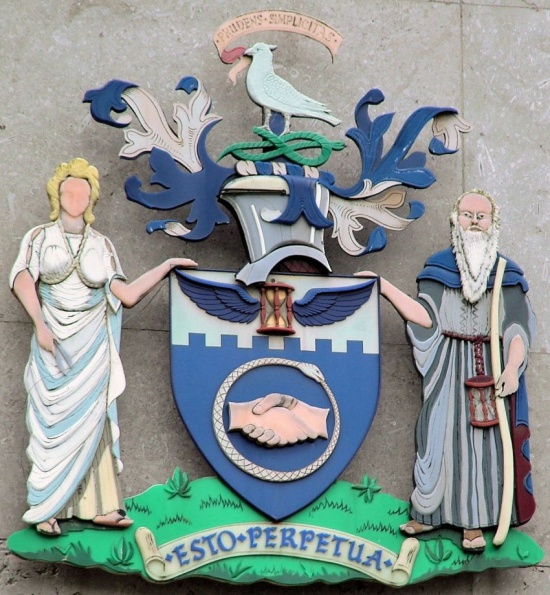
There is more information about the coat of arms and its fascinating symbolism here, the connection with Aviva here, and my blog about Insurance Company ghosts here.
How sad that the venerable Thomas Cook travel agency has gone into compulsory liquidation. Cook started organising leisure trips in the summer of 1841 when he arranged a successful one-day rail excursion at a shilling a head from Leicester to Loughborough. During the next three summers Mr Cook put together a succession of trips, taking passengers to Leicester, Nottingham, Derby and Birmingham. Four years later, he organised his first trip abroad, taking a group from Leicester to Calais. This was followed in the 1860s by trips to Switzerland, Italy, Egypt and America …

In partnership with his son, John Mason Cook, he opened an office in Fleet Street in 1865. In accordance with his beliefs, Mr Cook senior and his wife also ran a small temperance hotel above the office. You can still see the office now. It is graced with numerous globes and cherubs …
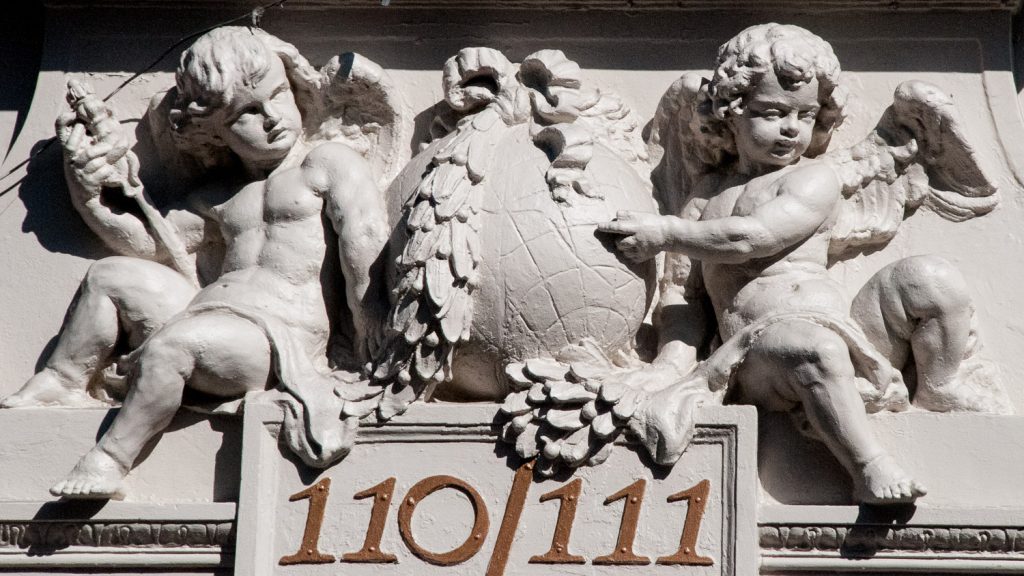
Hundreds of cherubs live in the City – you can find many of them pictured in my blog Charming Cherubs.
The Cook family sold the business in 1928 and the Thomas Cook brand has just been saved from obscurity after the Chinese owner of Club Med said it would buy the name for £11m. There is a nice potted history of the company here.
Once the beating heart of newspaper journalism, Fleet Street’s printing past survives only in some commemorative plaques and old signage.
Many of the alleys and courtyards contain plaques at their entrances. This one recalls a dramatic event as reported by The Sun newspaper …
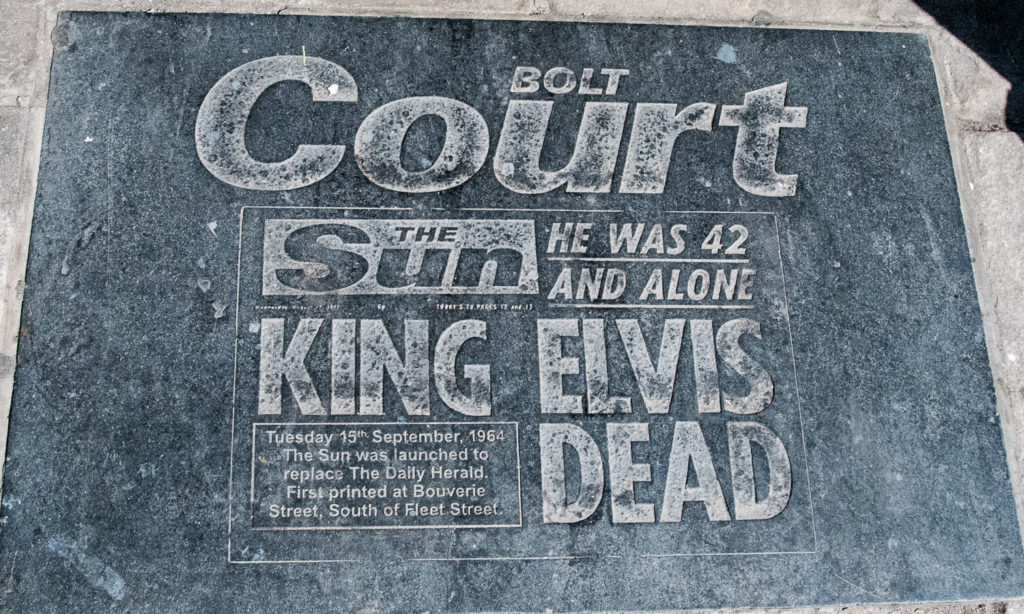
Computerisation is represented, a bit bizarrely I think, by the electronic Pac-Man game …
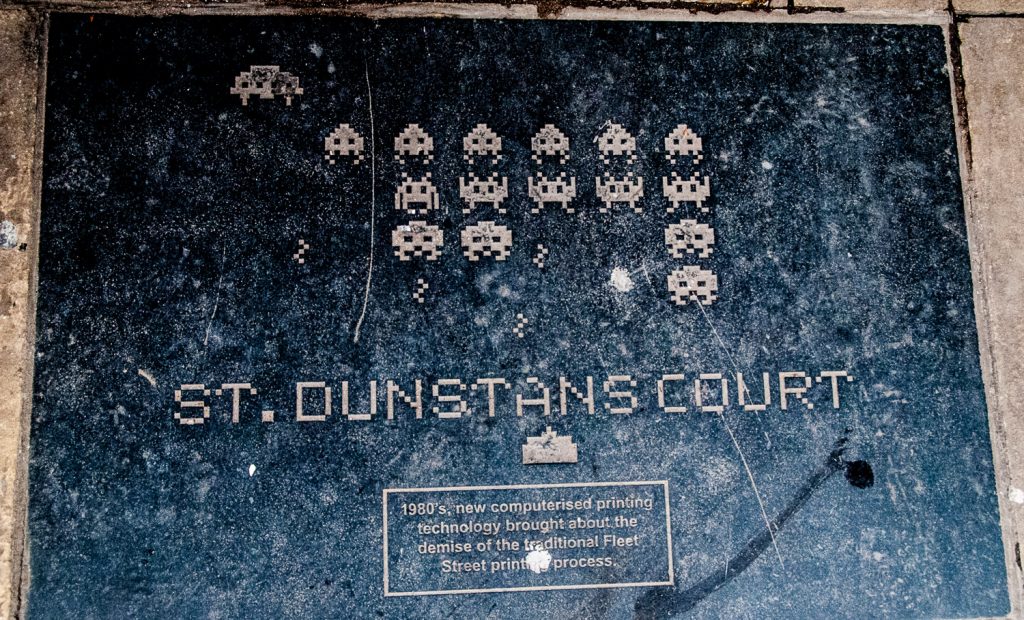
And some old signage is still clear …
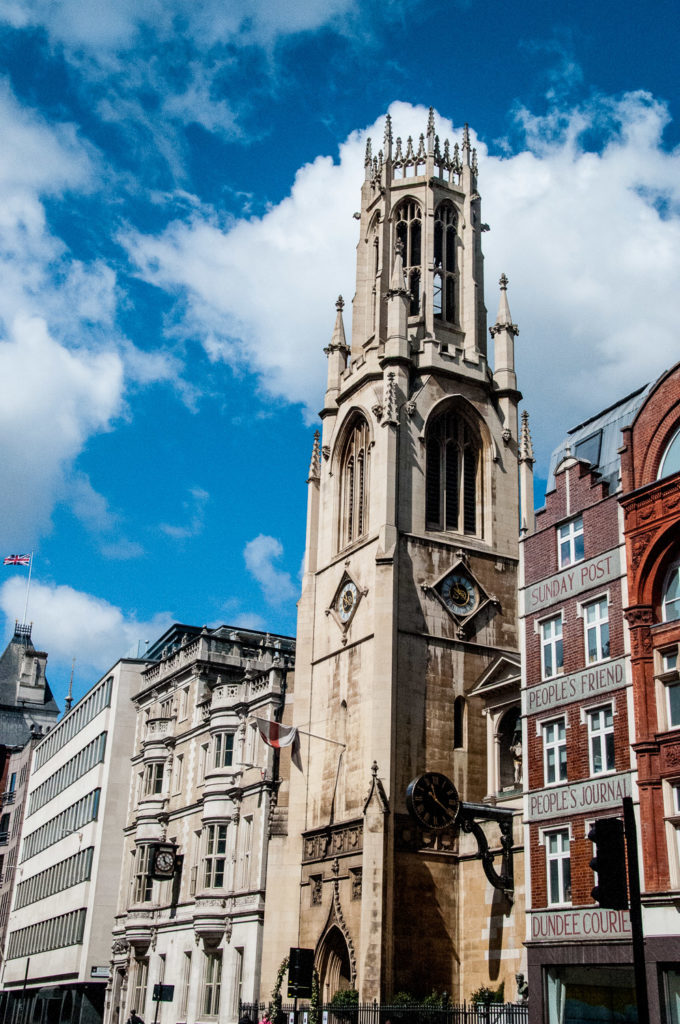
Child’s Bank has traded from the same Fleet Street site since 1673. Its impressive Grade II* listed premises, designed by eminent architect John Gibson, were opened here in 1880 …
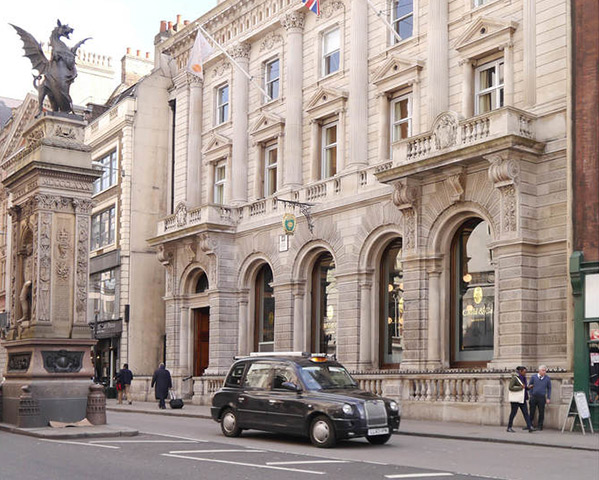
I really like the following story. When the founder’s grandson, Robert Child, died in 1782 without any sons he refused to leave his interests in the Bank to his daughter because she had eloped earlier that year with the Earl of Westmoreland. Child didn’t want the Earl to get hold of the Child family wealth so he left it in trust to his daughter’s second surviving son or eldest daughter. This turned out to be Lady Sarah Sophia Fane who was born in 1785. There must have been a great supply of Earls at the time because she married the Earl of Jersey in 1804 thereby becoming a Countess. Here she is in a painting by Alfred Edward Chalon …

Upon her majority in 1806 she became senior partner in the Bank and exercised her rights personally until her death in 1867. She was known by the nickname ‘Silence’, which was ironic since, famously, she almost never stopped talking. The memoirist Captain Gronow, who disliked her, called her ‘a theatrical tragedy queen’, and considered her ‘ill-bred and inconceivably rude’.
And now two memorials to real Queens …
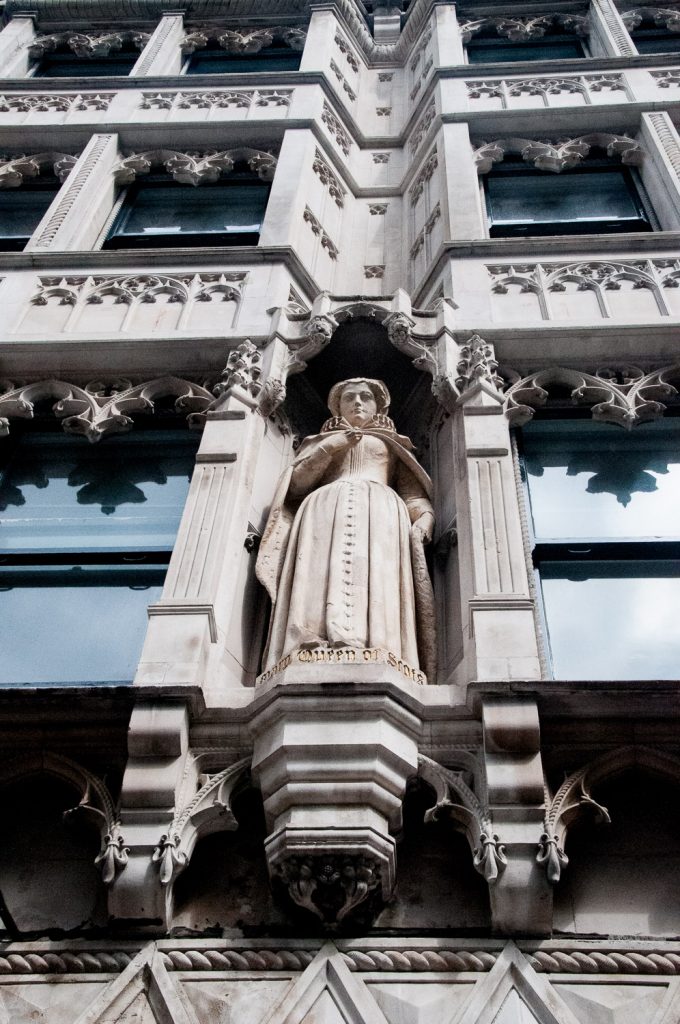
Mary Queen of Scots House was built in 1905 for a Scottish insurance company. The statue was the idea of one of the developers, Sir John Tollemache Sinclair, Bart, MP, who was a big fan of the ill-fated lady.
The architect was one R.M. Roe, who concocted ‘a facade as frilly as a doily with lashings of French Flamboyant tracery’.
Her nemesis is commemorated nearby …
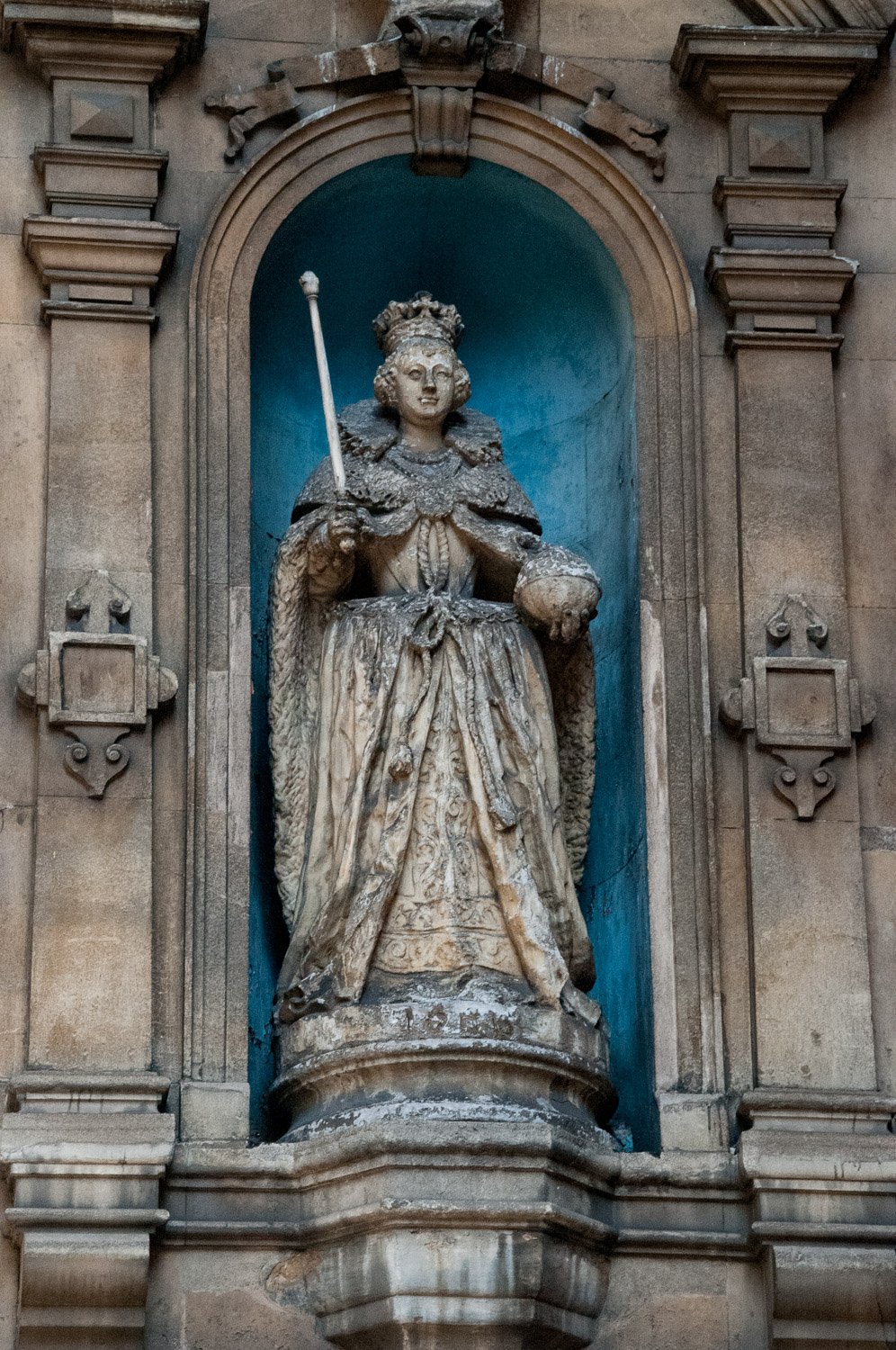
This statue of Queen Elizabeth I is nearby in a niche at St Dunstan-in-the-West and its history is rather complex. Some current thinking is that the Queen dates from 1670-99 despite a date on the base of 1586, which would have made it the only statue carved in her lifetime. It is now thought that, rather than the date of sculpture, this date was inscribed on it when the statue was placed on a restored Lud Gate in 1670 after the Great Fire and is merely making reference to the original gate. When the gate was demolished in 1760 she was moved to a previous St Dunstan’s but this was torn down in 1829-33 to be replaced by the current building. Meanwhile it seems that the statue spent the time in the basement of a nearby pub. It was only when that too was demolished in 1839 that the statue was rediscovered and put in its current niche on St Dunstan’s. Millicent Fawcett, the prominent suffragist, left £700 in her will for the statue’s upkeep and the funds are managed by the Society for the Protection of Ancient Buildings.
I have written about Fleet Street and its features many times but I have no doubt that I will be doing so again!
Don’t forget you can follow me on Instagram:


